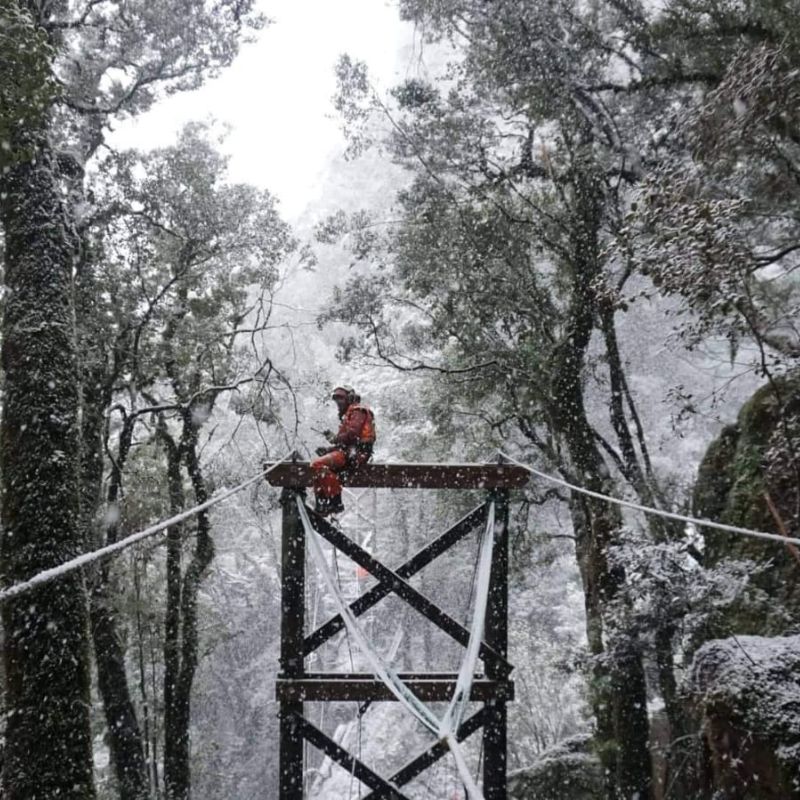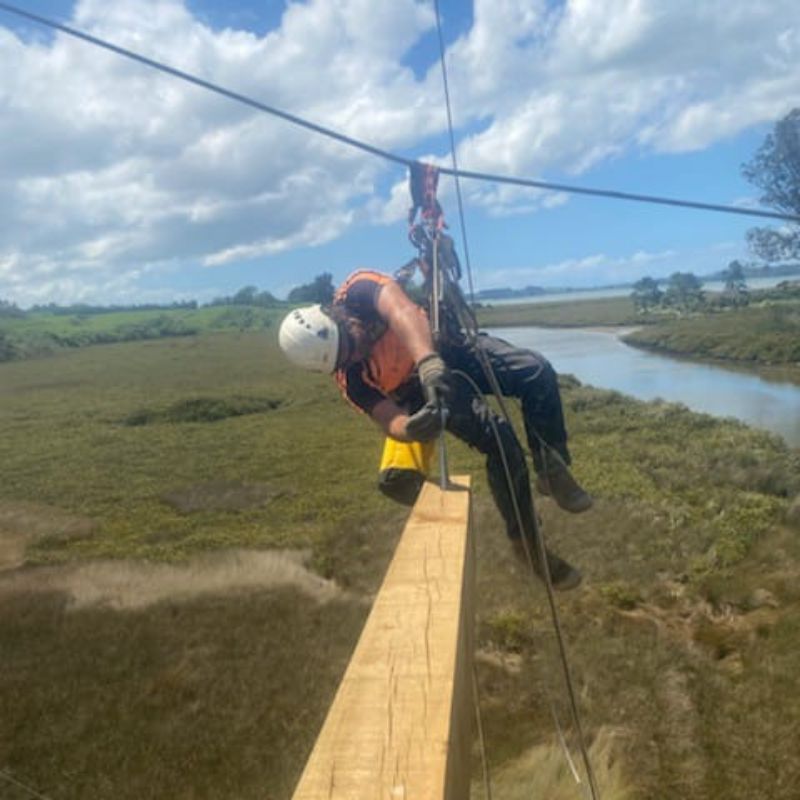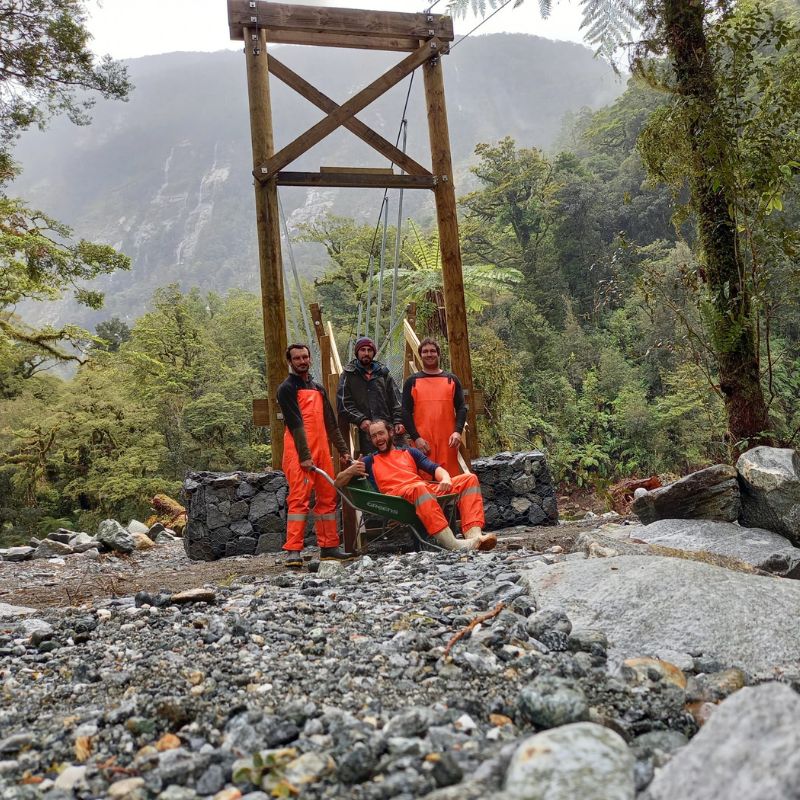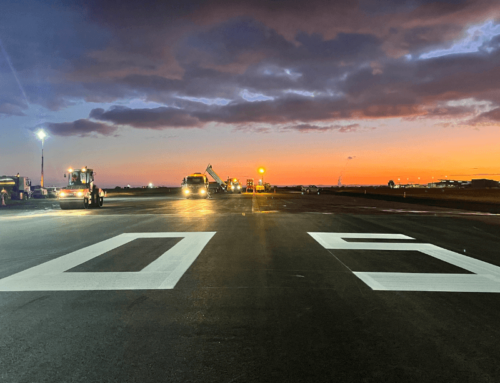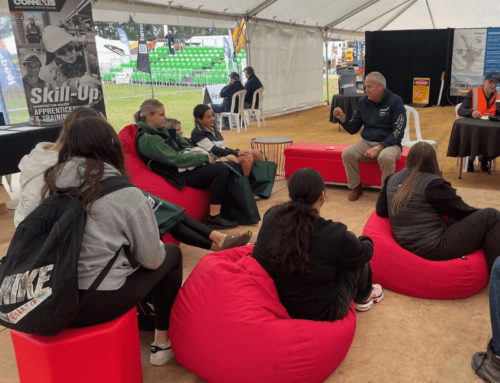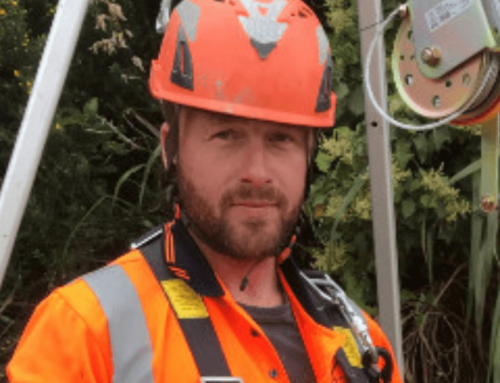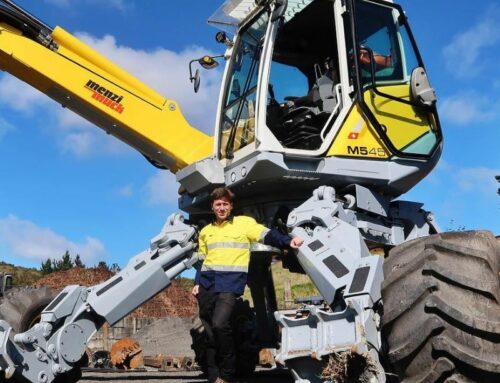Matt Thom has had an interesting career journey. From fabricating and installing climbing walls in Italy to managing a bungy jumping site in northern India, it has been a life less ordinary.
Now firmly based in New Zealand, Matt is a site manager for Abseil Access, a company in Wellington that specialises in bridge design and building, slope stabilisation, and industrial maintenance.
It’s in bridge building that Matt has chosen to settle, and it’s a job that fits his adventurous personality right down to the ground, taking him to some of the most remote places the country has to offer.
He is currently working just north of Taupo at Ātiamuri, constructing a 33-metre suspension bridge as part of the Waikato Cycle Trail. The bridge is the latest in a career that has seen him work on around 25 bridges providing access into the great Kiwi outdoors.
Some of the bridges Matt has built can be found on New Zealand’s Great Walks. His employer Abseil Access recently won an award from the Wellington Wairarapa branch of Civil Contractors New Zealand for a project he and his team worked on near the Rivendell filming site in Kaitoke Regional Park, constructing the new wheelchair-accessible Pakuratahi Suspension Bridge.
But winning awards and building bridges crossed by thousands of tourists each year in New Zealand’s outdoors is a far cry from where Matt got his start.
“The first project I did was the Manukau poo processing ponds, so I really started working life at the top,” laughs Matt.
“I might’ve been eighteen then, and I did it for some holiday work after leaving school. That’s where I started to do surface protecting, painting, abrasive blasting – but the carrot at that stage was transmission tower painting. Soon after the poo ponds, I was going down to Fiordland, near Lake Manapouri, painting transmission towers.”
After getting into outdoor education and doing a building apprenticeship, he headed overseas to the Dolomite region of Italy to climb after getting a taste for mountaineering back home. On his return to New Zealand, he headed for Canterbury to look for work after the Christchurch quake, and quickly found work doing slope stabilisation and other geotechnical work in the Port Hills.
A job he initially thought of as a springboard quickly developed into a love for civil infrastructure construction, he says.
“It was obvious at that stage there were bridges being built, and I expressed that I wanted to get on a bridge. Eventually that option came up, and then I was building bridges. But it’s not all bridges, there’s quite a diverse range of things to do in rope and abseil access … doing maintenance on lighthouses, industrial maintenance and technical drilling. The bridges may be glitzy, but slope stabilisation, drilling and meshing unstable slopes, that’s a massive part of what we do.”
It’s an area of work that has taken Matt to the back of beyond on many occasions. In the New Zealand backcountry, worksites offer fitting challenges for outdoorspeople turned construction hands.
“Often, we’ll be sleeping in a tent, or if we’re lucky, there might be a hut nearby we can stay at. The other option is we have flyable bivvies – a little hut with a couple of bunks that can be slung under a helicopter and flown in. They’re pretty pokey, but it’s enough to keep dry and have a dry place to sleep. We’ll fly a whole bunch of other gear in as well, and for a team of four, we’ll usually have two bivvies and build a wee kitchen between them. Like a little lean-to.”
For those who love working in the outdoors that want to enter the industry, there are plenty of opportunities out there, Matt says.
“There’s huge scope right now. Cycle trails are really exploding, and there are always plenty of slope stabilisation jobs above critical infrastructure. It’s a great job for a lot of young people, if they’re not so fussed on a nine-to-five job, although that’s totally an option.”
“Getting a rope access ticket is always a good first step because it shows you’ve taken the time to learn how to handle ropes and learn a little bit about rigging. Other than that, it’s just being enthusiastic and showing up. Showing that you’re keen and having a really good work ethic.”
At the moment, there are many people who have made the shift into civil construction from the adventure tourism industry, largely due to the opportunities in civil construction and the higher wages it offers. Matt currently works with a number a raft guides, who have brought practical skills and also the ability to handle long stints away in isolated locations.
“You need to have a bit of that mentality, you know. Having a little bit of grit does help. But just being a good communicator and having a good work ethic, those core values are the most important. People that get on with other people, people who can cook a meal. People who are nice to hang around with.
“To me, that’s often worth more than someone whose got all the technical skills but is a bit of a dropkick. Especially on those backcountry jobs, you want someone you can get along with. Having some trade skills doesn’t hurt, but they’re not an absolute requirement.”
And if working to construct the tracks and bridges that people travel from across the world to experience doesn’t do it for you, you can always take in the local sights and experiences after you knock off for the day.
“I’ve taken a fly rod with me, taken pack rafts with me, I’ve taken my paraglider,” says Matt.
“Depending on the duration of the job and where we are, I’ve definitely taken some toys with me. We painted the Cape Kahurangi lighthouse a couple of years ago, so we took wetsuits and did some spearfishing. Good times.”

